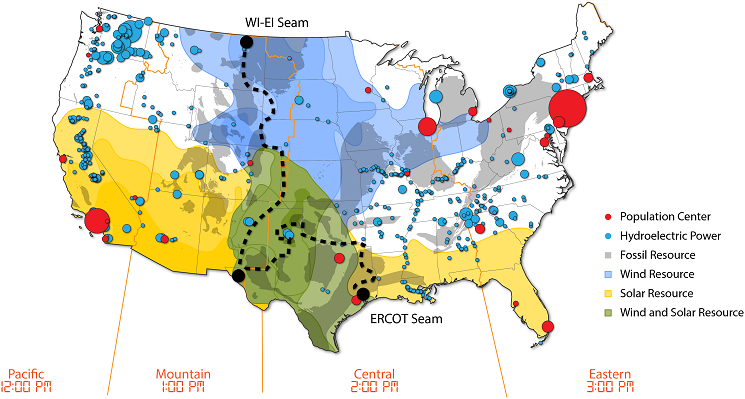Resource Adequacy Primer
Amanda Ormond, Western Grid Group
January 15, 2021
Today’s electric system is primarily composed of mechanical, largely thermal generators. Coal, gas, nuclear and hydro plants have predictable characteristics, from which utility planners have built expectations of performance and metrics that are used to ensure there is sufficient energy available to meet demand under widely varying conditions. This assurance is known as Resource Adequacy (RA). In its simplest form RA is determined by projecting expected demand for each hour of the year, then adding extra reserves to plan for unexpected events. Unexpected events can include loss of a generator or transmission segment, weather anomalies, etc.
If the electric system is not resource adequate there will be unserved load, showing up as black outs or brown outs that can create minor inconveniences or have significant costs and economic consequences. Since it is cost prohibitive to ensure that there will be sufficient energy under all continencies, the industry has developed planning rules that specify an acceptable level of risk for resource shortages. The historic, simplistic planning rule is one outage in 10 years (1 in 10). These planning rules have been implemented by building typically 15% more resources than peak load projections, a precaution known as a Planning Reserve Margin (PRM). PRM planning has been effective, but often has resulted in the overbuilding of the system, which is costly for consumers.
RA and resource sufficiency have attracted attention among utility planners and beyond of late because dramatic changes in the electric system are making methodologies based on meeting peak load with a PRM as the determinant of overall system RA increasingly inadequate. Ensuring sufficient energy at needed times and stability challenges are coming from an increasingly complex electric system, as a result of additions of demand side technologies, efforts to electrify the transportation and building sectors, additions of naturally variable wind and solar resources, and increases in extreme, long-duration weather events. Adoption of ambitious carbon reduction goals by state regulators and utilities and increasing interest to address social inequities will further affect the makeup of the future electric system. Thus, it is not surprising that methodologies previously found adequate, will be inadequate in the future.
Today’s deterministic methods are losing favor to more probabilistic calculations to determine RA, which are more useful in assessing various risks. These include Loss of Load Hours (LOLH), to determine duration of unserved load; Loss of Load Expectation (LOLE) and Expected Unserved Energy (EUE) to measure magnitude of system inadequacy; and Loss of Load Probability (LOLP) for frequency of an outage. One of the most comprehensive methodologies being used today is Effective Load Carrying Capability (ELCC), which determines the contribution of all resources collectively, rather than individually. ELCC is a significant improvement over other metrics as it quantifies supply and demand side resource contributions. However, this method can be complicated and expensive to calculate.
Currently in the Western U.S. the 39 different Balancing Authorities (BA), most with resource planning responsibilities, have no standardized RA determination method. As the West continues on the path of regionalization, methods for calculating RA by individual BAs must become consistent to ensure more homogeneous planning to facilitate effective and efficient system operation.
It is imperative to shift to use probabilistic planning methods and retire historic 1 in 10 outage rule of thumb that has been the industry standard for decades.
In the near future, however, an entirely new holistic regime will need to be designed and adopted that take into account the energy, capacity and flexibility characteristics of demand and supply-side resources and energy storage, all components of future energy systems. And, this new methodology needs to be adopted and used consistently among planning regions.
This document available HERE (as a PDF) to view or download.
A more technical RA primer by NARUC (National Association of Regulatory Utility Commissioners) can be found HERE (PDF)

